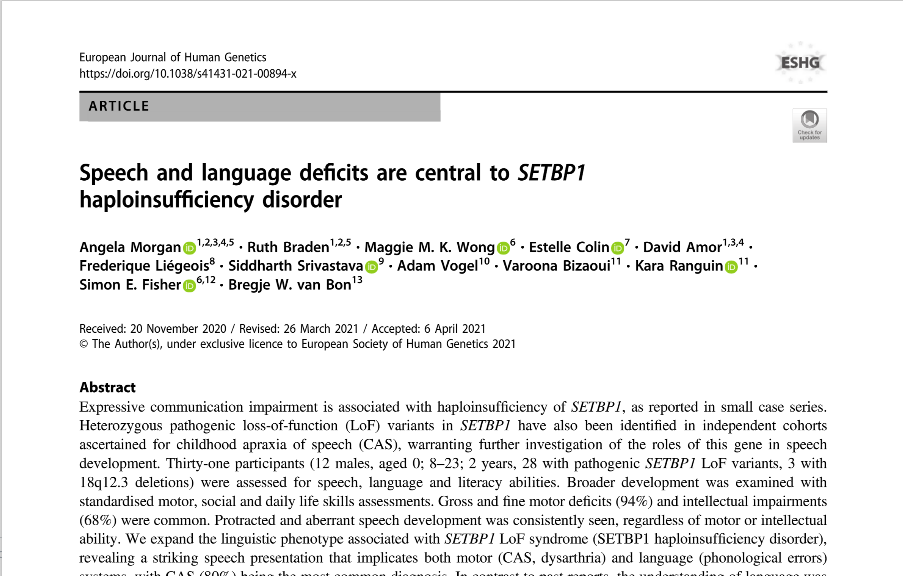SETBP1 disorder Speech & Language Paper JUST RELEASED!
The first publication dedicated to delving into the speech and language characteristics of those with SETBP1 disorder (SETBP1 haploinsufficiency disorder) just published in the European Journal of Human Genetics. This is the 2nd SETBP1 disorder paper to post within the past week! Dr Angela Morgan from the Murdoch Children’s Research Institute who has worked closely with our families for the past 2 years orchestrated this paper with cooperation from several specialists and researchers well known in the SETBP1 community including Dr Brejge van Bon, Dr Simon E Fisher, Dr Sid, and Maggie Wong.
“Clinical implications – We show that aberrant communication development is a central feature of the SETBP1 LoF syndrome. Children with heterozygous pathogenic SETBP1 LoF variants or deletions should be enrolled in speech therapy in the first year of life. Given the markedly delayed verbal communication trajectory, multi-modal communication, such as sign language or communication devices would support language acquisition prior to speech developing. The complex and widespread linguistic deficits signal that children will need speech motor therapies to develop verbal speech, but also phonological interventions focused on early literacy awareness and approaches targeting language comprehension as well as production. Whilst children demonstrate a strong desire to communicate, social skills warrant therapeutic attention. Given this pervasive communication profile, we confirm SETBP1 as a strong candidate for speech and language disorders.”
Our hope is that publications like this one make it easier for our families to access the therapies they need including targeted speech and language therapy and for insurance to cover the therapy, which can be a challenge our families face. This paper also touches on the need for therapeutic attention for social skills and phonological awareness for early literacy and more broader phenotype information.
This paper serve as a much needed resource to share with speech therapists, neurologists, geneticists, educators and SETBP1 families.
SETBP1 Society is honored for being recognized as a collaborator and supporter of this publication.
The publication is called Speech and language deficits are central to SETBP1 haploinsufficiency disorder. You can read the publication at https://rdcu.be/cjud0.
